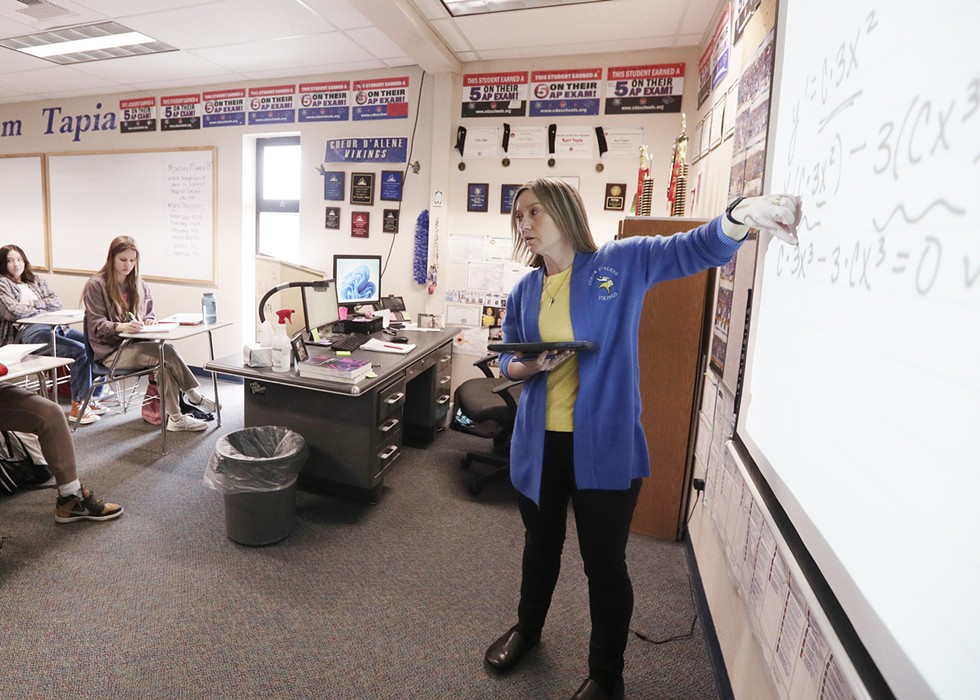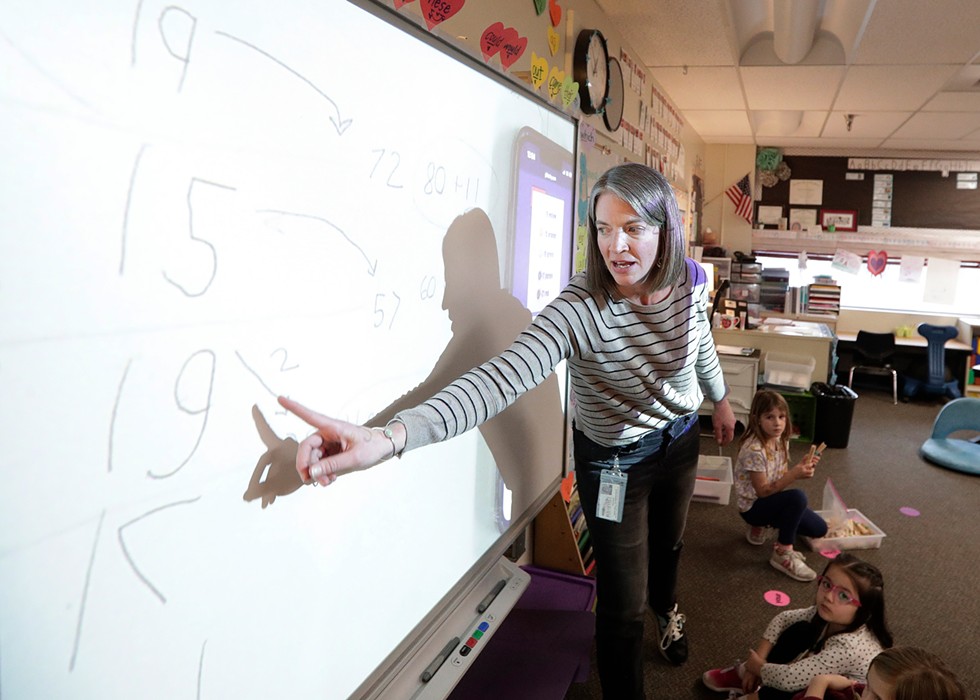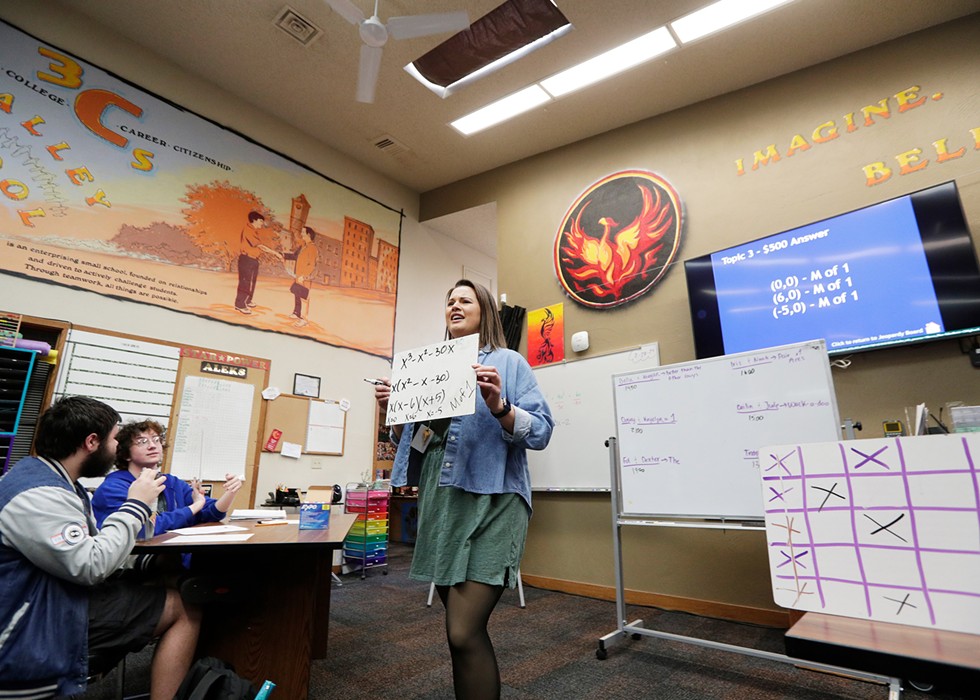Pi is undoubtedly the world's most popular irrational number. And that's because it's unequivocally cool — I mean, what other mathematical constant has its own day?
On its face, pi is a simple concept: It's the ratio of a circle's circumference to its diameter. Ancient Babylonians and Egyptians used the number to determine the area of a circle. Mathematicians through the ages have refined their understanding of pi, but overall its use has remained the same.
Dive deeper, though, and you'll find its fathomless complexities. For example, humankind will never know every single digit of pi. It's infinite and random, meaning that every combination of numbers that ever has or ever will exist can be found somewhere in pi. (Luckily, I didn't locate my Social Security number in the first million digits.) It's transcendental, which essentially means that algebra can't explain it. It's irrational, which means it can't be written as a ratio or fraction.
So, in celebration of Pi Day and all its mysterious, mathematical glory, we're highlighting the work of some math teachers in the Inland Northwest who keep students engaged and excited.
Because, math is fun!
SARA BALL-VADEBONCOEUR
First grade teacher, Roosevelt Elementary School
"Alright, turn your math brains on," Sara Ball-Vadeboncoeur tells her first grade class on Spokane's South Hill in a sing-songy voice.
A dozen 6-year-olds sit in a semicircle clump in the middle of the room watching a short video of colored candies — yellow ones and orange ones, followed by green, purple and red ones — being dropped in a bottle. One after the other, they drop too fast to count on their fingers.
"OK," she instructs, "talk to someone about what they saw."
Energized chatter picks up as the students discuss the video.
"If you ate those, would you get a tummy ache?" one student asks, loud enough for more than their partner to hear.
"Are those M&Ms?" another student chimes in.
After a few minutes, Ball-Vadeboncoeur claps rhythmically to regain her students' attention and asks them to guess how many candies are in the bottle.
Her students are learning about estimation — a way of roughly calculating a number.
Students yell out their guesses. One particularly confident student shouts, "310!"
None are correct — there are 91 candies. But it doesn't matter. The actual point was to engage all the students in this problem, which is a lesson on double-digit addition.
"A lot of people think of math as worksheets, you know, [students] sitting down with a worksheet, adding, subtracting, solving equations," she says later. "It's really so much more. I want them to look at something like a problem and be able to have a starting point. ... I want them to learn to be self-starters."
Once her students have calmed as much as 6-year-olds can be, she finally puts the number of each colored candy — 19 yellow, 15 orange, 19 green, 17 purple and 21 red — up on the board and asks again how many candies are in the bottle.Ball-Vadeboncoeur has been teaching for about two decades. In that time she's perfected her craft and pushed past the notion that there can only be one right way to solve problems — like the video she showed her class today.
PERSONAL PI
Pi and I have a fractious relationship, which is odd considering it can't even be represented by a fraction.
My first introduction to pi was during a sixth grade math class. About a week before Pi Day, my teacher handed the class a little sheet with the first 250 digits of pi. Our goal was to memorize as many digits as possible and recite it aloud for the chance to win a Shari's pie coupon.
I remember smuggling the paper into other classes where I would practice, instead of completing my other work. (Yes, I know, bad idea.)
Finally, March 14 rolled around and I was nervous. I had 100 digits memorized, and I could almost taste my discounted pie (obviously pecan). Tragedy struck when I learned that one of my classmates had more digits memorized than me.
I was ready to settle for second place — a position that my dad always called the first loser — but then a miracle occurred. During recitation, this student mixed up two numbers around the 80th digit, which basically secured my win as long as I didn't mess up, too.
I recited those digits perfectly, securing a first place victory, that is until our teacher mercifully allowed do-overs. My heart sank as I shifted into second place, unable to remember any extra digits for my do-over.
While I wasn't awarded for my memorization, my mind was left with another gift. To this day, I can still recite about 20 digits of pi at will.
Sixth grade me flew too close to the sun, but instead of Icarus' prompt freefall into the sea, my hubris left me with this unshakeable number seared into my brain.
I wonder if that's why I'm a writer... ♦
— COLTON RASANEN
"In the past, it would have been 'Well, you're just going to take these numbers and line them up and add them all together like this,'" she recalls.
"I'm trying to foster a sense that there are many ways to look at a problem," she says, smiling as she talks about her class. "It's then my job as a teacher to watch what they're doing and assess where they are in [solving] a problem."
Some students may be able to think through a problem and split numbers like 15 into a 10 and a 5, while others are only comfortable counting by ones.
Students group up to solve the problem. One student working solo tries to count by ones with wooden sticks so she can add them all up at the end. Another pair works on a piece of paper as they start adding numbers in groups of 10.
Ball-Vadeboncoeur walks around the room and asks students about their process. Instead of offering an answer, she has the students talk her through their process. She doesn't tell them they're right or wrong, but instead listens and asks questions where there may be confusion.
"I try to never point out a wrong answer," she says. "Most of it is information I'm collecting, like, 'Oh, I need to work with this person on a realistic answer.' That gives me a starting point to go and see if we can visualize this together and work on it together."
By letting her students work through problems on their own without a fear of failure, Ball-Vadeboncoeur has crafted a classroom where math can be exciting and attainable. Something that hasn't always been true for many students, she says.
BRANDI WORTMANN
Seventh and eighth grade teacher, Centennial Middle School
Brandi Wortmann's Spokane Valley classroom at Centennial Middle School has two rows of desks on opposite sides of the room with circular tables clustered in the middle for group work. Her own desk sits in the back of the room.
But she doesn't spend much time behind the desk. Wortmann's energetic and sometimes unexpected teaching style works best when she can roam the room, using her entire space.
A math teacher for more than a decade, Wortmann's main goal is ensuring her students are fluent in her subject. And as a seventh and eighth grade math teacher, she's got two years to do it.
"Math is a foreign language," she says. "[It] boils down to addition, subtraction, multiplication and division. ... And if you can't speak it, it's just going to be a lot harder for you."
Part of that literacy includes bringing in real-life problems involving real numbers. At the end of each year, once all the Common Core Math Standards have been met, that's exactly what Wortmann does.
In a lesson about financing with different interest rates, she tells her students that she's planning to buy a Peloton exercise bike. She presents them with three different options, each with different interest rates, and asks them to calculate how much she'll pay per month in each plan.
Then she asks their opinion about which plan to choose. It's a relatively simple lesson about finances, but that real-world connection is what makes it effective, she says.
Wortmann also focuses on connecting with students to make the classroom feel like a safe place to learn and, realistically, to fail. To accomplish this, she's introduced a seven-day late policy that allows students the chance to re-do an assignment that they may not have done well at.
"That shows me that [a student] understands the mathematics behind it," she explains.
Additionally, she focuses on outside stressors that students may be facing and works to combat them.
For example, one of Wortmann's students has severe test anxiety. They're otherwise a straight-A student, she says, but they just freeze up during any and all tests.
"Finally, I took them out in the hall and said, 'We have to find a way around this, because in high school 90% of it is going to hinge on tests, in college 90% of it's going to hinge on tests, too,'" she says.
Wortmann figured out that if she framed the test as just another homework assignment, it relieved the weight of that stress.
"Some of these kids struggle now," she says. "They just need to find the person that's going to help them go through it and then make their way through it."
No matter how exciting math lessons may seem, it's just not a subject that interests some students, and Wortmann says that's absolutely fine.
"They could be English lovers. They could be science lovers. Maybe their favorite class is PE," she says. "I'm hoping that at some point in time, the math still makes sense to them."
MICHELLE MARSURA
Math teacher, Spokane Valley High School
As adults, we learn that failure is a part of life. It informs our future decisions by letting us know what not to do. But as students, says Michelle Marsura, failure can feel like the end of the world.
"For so many kids, math becomes this dreaded, scary thing, because there's a lot of failure involved," Marsura says. "That's one thing our school talks about often — the importance of failure."
Success through failure is a large part of her pedagogy — her philosophy of teaching.
"I love big failures. If you're gonna fail, fail loudly and fail confidently," she says. "Our school then becomes that space where kids can feel safe to participate and fail, and try again, because that's life."
Marsura has worked at Spokane Valley High School — a project-based school where students learn by actively engaging in real-world and personally meaningful projects — for about 11 years. While she was initially wary about the prospects of working in a nontraditional school, now she can't imagine the alternative.
Like other teachers, Marsura wouldn't be able to convince her students that it's alright to fail without first establishing a relationship.
HAPPY PI DAY!
We've been celebrating Earth's most popular irrational number for almost 40 years now, which is a bit sad considering pi dates back about four millennia. And actually we only started celebrating Pi Day broadly 15 years ago — before that it was just a niche event at San Francisco's Exploratorium science museum.
Pi Day's humble beginning started in 1988 when an Exploratorium employee and physicist Larry Shaw (pictured below) realized that March 14 — 3/14 — represented the first three digits of pi, 3.14. He saw this as an fun opportunity to celebrate math and learning, according to the Exploratorium.
It was later recognized that Albert Einstein — the father of modern physics — was born on March 14. After finding this out, Shaw upped his party game. According to the Exploratorium, he led a parade around the museum — which ended at the "Pi Shrine" where the entire procession sang Happy Birthday! to Einstein.
Shaw, who died in 2017, would later be lovingly known as the "Prince of Pi."
In 2009, the U.S. House proclaimed March 14 as Pi Day — a victory for the underrepresented mathematical constant.
Pi Day is also celebrated internationally. The United Nations Educational, Scientific and Cultural Organization designated Pi Day as the "International Day of Mathematics" during its 40th General Conference in November 2019.
In another decade, we'll probably see the first Pi Day celebration on the moon.
— COLTON RASANEN
"My Algebra II class happens to have a lot of theater kids in it. And so I bond with them over my favorite musicals and ask them how their line memorization is going," she says, noting her class sizes are smaller than they would be in a traditional high school. "It's just the little things of knowing who they are outside of the math classroom."
Sometimes that connection comes from a place students may not have expected — like Marsura's personal high school folder with "I hate math" written across it.
"I didn't actually hate math when I was in high school," she laughs. "The kids just think it's hilarious, and I get to tell them, 'See you guys? Your minds will eventually change.'"
As a high school teacher, Marsura is astutely aware that her students' days before graduation are numbered, so she tries to reflect the math they may be doing in day-to-day life. She says that can be challenging though, because real-world math is often messy and frustrating.
Rarely will these students be figuring out problems with quick and easy answers.
"When you graduate high school, you're never going to get exactly X = 20," she explains, elaborating on the ways math may look after high school ends. "It's always going to be dollars and cents. Or measurements in inches and centimeters."
By being frank about the subject and its uses, Marsura has created an environment where students can gain confidence and in some cases come up with new ways to solve equations.
"I am the expert in the room, but I'm not the only expert in the room," she says. "[Students] might need to think about things differently than I do, and that's totally alright."

KARI TAPIA
Math teacher, Coeur d'Alene High School
Kari Tapia is a competitive person. The evidence is in her classroom at Coeur d'Alene High School — the same room she sat in as a student more than 20 years ago.
Bulletin boards in the back of the room are peppered with newspaper clippings recording her math team's consistent victories. Behind her desk sit the corresponding medals and trophies.
Most of the wall space is taken up by signs that say, "This student earned a 5 on their AP exam," the highest possible score on the Advanced Placement test, with the student's signatures on them.
Tapia tells me that her class often records a higher percentage of top AP scores than the state's average. Last year, half of her AP calculus students passed with a 5.
All of this success didn't appear out of thin air though. Tapia has spent 15 years pushing students to the limits of their capabilities.
"It's really hard to understand calculus," she says. "So I push them really hard."
That dedicated drive comes from Tapia's own struggles with calculus. She always excelled at her math classes in high school, but it wasn't until she retook calculus in college that the subject began to click for her.
"It's one thing to be able to do a problem, but to understand it is a whole other level," she says, explaining her pedagogy when it comes to teaching.
She mirrors that in the way she coaches the high school math team, which has become a major player at competitions in the last decade.
Once school's been dismissed, a handful of students remain. About eight huddle in groups of four in Tapia's classroom, completing a worksheet of complex calculus problems to prepare for an upcoming math competition.
These competitions, however, aren't like the ones in movies. (We're looking at you, Mean Girls.)
Instead of a rapid-fire Jeopardy-esque competition, competitors are given multiple choice tests with a 45-minute time limit. Each correct answer equals a point, so the objective is to get as many questions correct as quickly as possible.
Students at Tapia's prep session work through the practice questions individually at first, then come together as a group to discuss not so much what the answers are but how they reached them.
The whole time Tapia is merely observing. And when she does occasionally chime in, she only offers suggestions for the students to consider as they blaze through the problems.
After about half an hour, as the students pack up to leave, they crack jokes about the problems they've just solved — hilarious math jokes, as long as you understand them. ♦
Related
LET THEM EAT PIE
For this week's cover, we asked Callie Johnson at Made With Love Bakery to bake us a pie for Pi Day, and did she ever deliver.In fact, she was already preparing for a busy Pi Day — even though they're pies and not pi's but, hey, they're still circles.
She and her crew are baking up some special confections to celebrate math, science, knowledge and, yep, pies!
So head on over to her West Central bakery (2023 W. Dean Ave.), and let her know you saw her pie on the cover of the Inlander.
— NICHOLAS DESHAIS


















